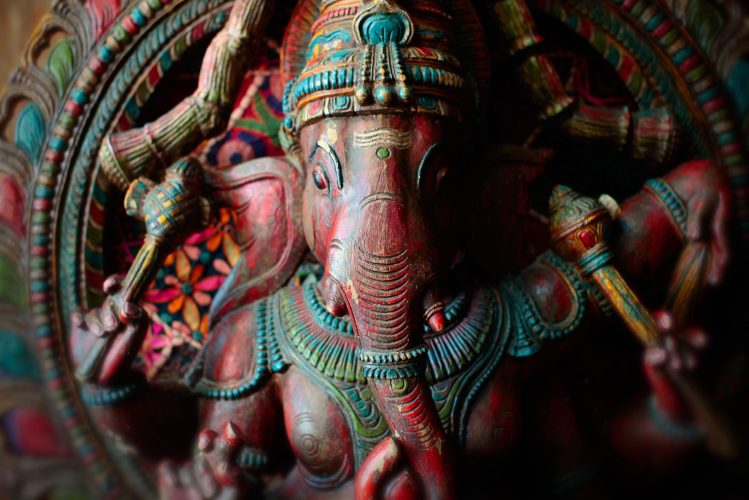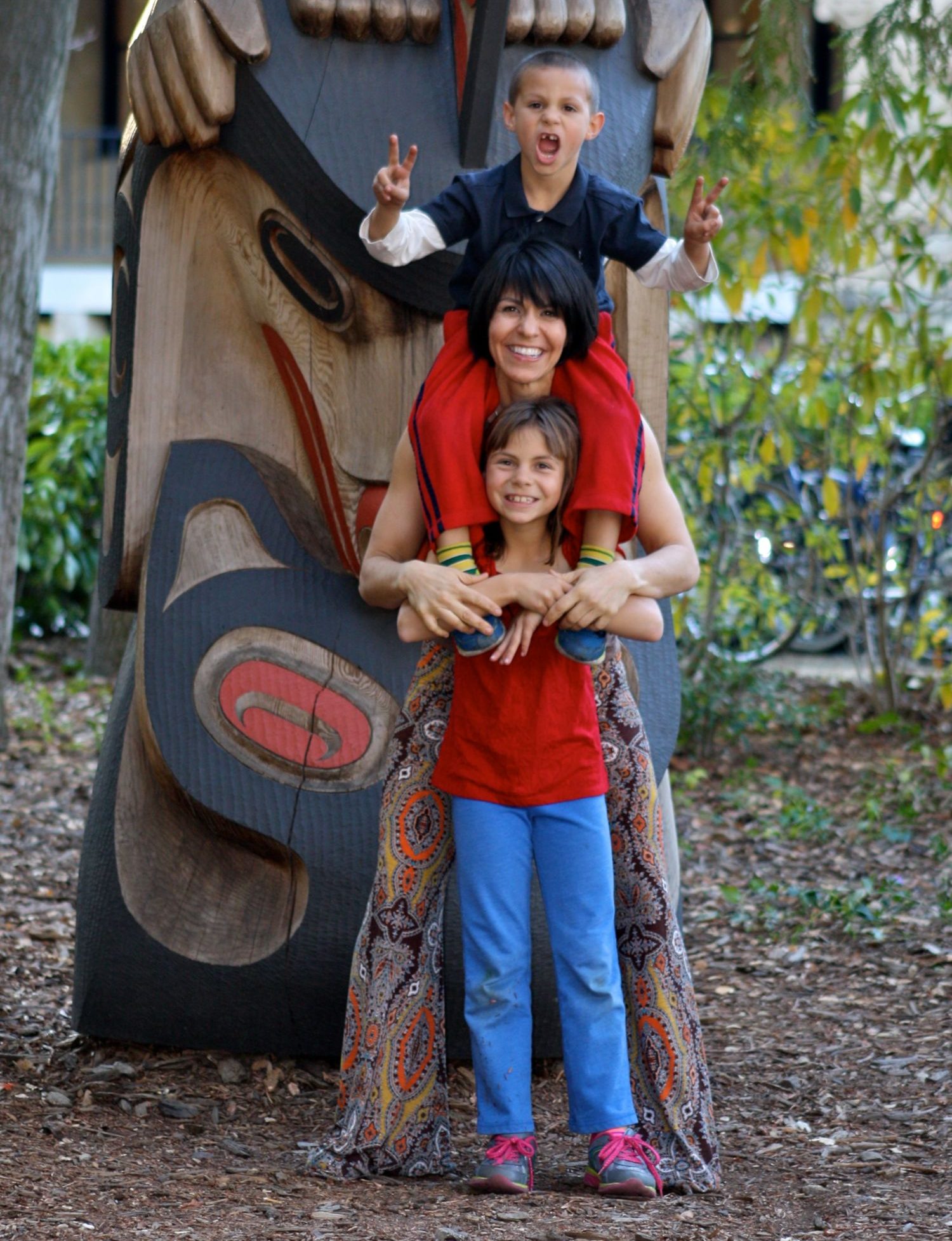For as long as I can remember, I’ve been drawn to images of gods and goddesses from various spiritual traditions, and awed by their rituals. An intrinsic part of the Bhakti (devotional) Yoga traditions, rituals help focus the mind for meditation while cultivating love and affection for the divine. A mūrti, or statue or image of a Hindu deity, is honored by placing it on an altar and making various offerings in a ceremony called pūja. A pūja can be as simple as lighting a flame and offering a flower at one’s home altar, or it can be a festive temple affair with specially-trained priests and elaborate offerings that can last for many days. The essential meaning of pūja is that of welcoming an honored guest. We are inviting the living presence of the divine to reside in our homes and hearts.
If you’ve acquired a mūrti, you may have intuitively known to place it somewhere special. Perhaps you’ve already experimented with creating a home altar – a special, dedicated space for the images and tools of your spiritual practice. If so, you’ve already learned how arranging such a space can inspire a sense of deep peace and loving connection. It may become your favorite place to sit for meditation, chanting, or āsana practice.
Learning the traditional ways of honoring a deity can take us even deeper into our relationship with that form, as we become part of a community of practitioners that have loved and honored that form for countless generations. Another benefit of learning the traditions of the deity you’ve chosen is that you can avoid unknowingly committing offenses or engaging in harmful cultural appropriation. When we’re working with spiritual traditions and practices that are indigenous to a culture other than our own, it’s important to spend time learning from people within that culture wherever possible.
If you are exploring the path of Bhakti Yoga, here are some basic guidelines for working with a mūrti, as well as a simple pūja you can incorporate into your sādhana (spiritual practices).
- Create an altar. Find a special place in your home for your deity. A shelf or small table (ideally along a north or east wall) will do. Mūrtis are considered the living form of the deity and should not be placed on the floor (unless a “seat” of some kind is beneath them), in a bathroom, or near shoes. Pointing our feet towards the deity is considered disrespectful, so it’s best to choose a place where this is unlikely to happen. One of the nicest things we can do daily is to light a lamp of ghee (clarified butter) or oil, or even a candle, on your altar while doing your sādhana.
- Make it beautiful. Cover the altar with a nice cloth (deities should always have a cloth or seat under them) and keep the area clean. Traditionally, everything on the altar will have never been used for any other purpose. You don’t have to spend a lot of money buying new things; it can be very simple. Special items for pūja can be found online or at Indian grocery stores.
- Give offerings. After bathing, wear fresh clothes and prepare everything so you don’t have to walk away in the middle of your pūja. Do everything with your right hand or both hands together. If you know a mantra for your deity, you can repeat that mantra throughout the pūja. Light the lamp, sprinkle water around the deity, and decorate it with a garland of flowers or colorful ribbons. Additional offerings might include sandalwood paste, flowers (fresh, never dried), incense (wave clockwise in a circle three times), and fruit. Because we want the deity to enjoy the offerings first, we avoid smelling or tasting these until after the pūja, when they can be enjoyed as blessed prāsad. An ārati can be performed by circling a flame of camphor clockwise while ringing a bell with your left hand and singing a song of praise.
- Take prasād. After your pūja, you can extinguish the lamp by waving it or pressing a flower gently into the flame (never blow it out). The flowers, fruit, etc. that have been offered are now blessed and can be distributed and consumed after the pūja. It is said that when we enjoy the prāsad from a pūja, we imbibe the subtle energy of blessing emanating from the deity.
Whether you offer a single flame, or flower, or delve into a more complex daily pūja, remember that love, sincerity, humility, and devotion are the key. In the Bhagavad Gita, Sri Krishna says, “Whatever I am offered in devotion with a pure heart – a leaf, a flower, fruit, or water – I accept with joy.”















One reply on “4 Steps For Creating An Altar In Your Home”
[…] always wanted to have an altar in your home, Breathe Together Yoga instructor Prajna Vierira offers four simple steps on creating a sacred space. In order to honor the transition from summer to fall in your divine […]